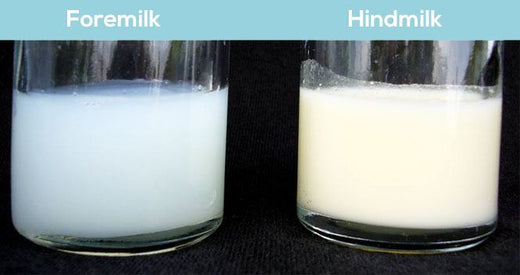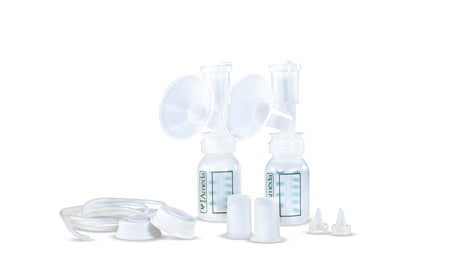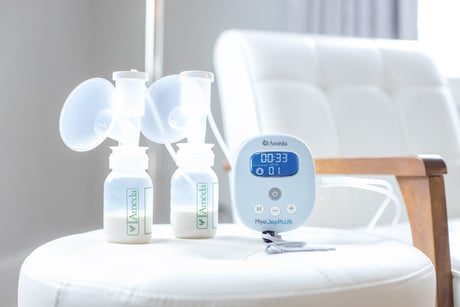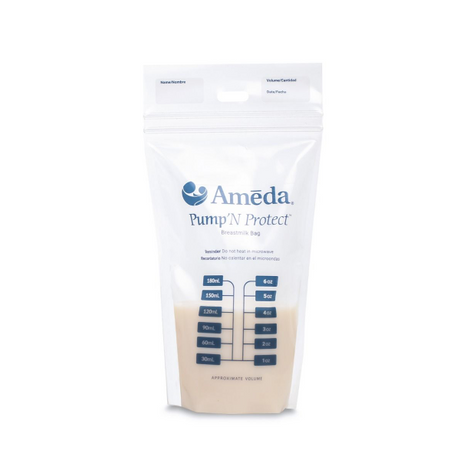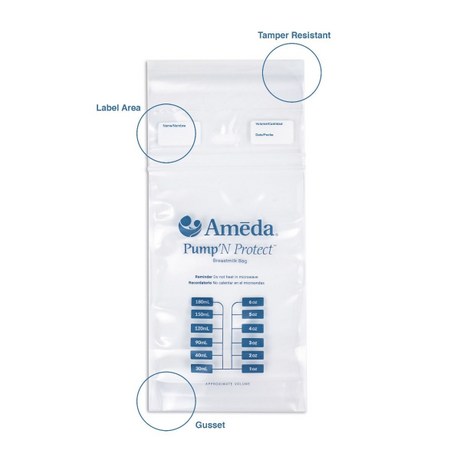Published:
Is My Baby Getting Enough Hindmilk?
When you start breastfeeding, two new worlds open up. One is the world of bonding with your baby through nursing. The other is a more medical side of breastfeeding, full of confusing language like foremilk and hindmilk. What’s going on?
What Are Foremilk and Hindmilk?
Your body produces milk that’s specifically adapted for your baby. If your little one catches a bug, your breasts may “know” before you do, and start producing antibodies to fight your baby’s infection. Milk develops over time, from the first drops of colostrum to mature milk that contains the ideal blend of proteins, fats, and vitamins for a baby.
Your milk also changes gradually over the course of a single feeding. The milk you express at the beginning of a session has a thinner consistency, relatively high volume, and low fat. This is known as foremilk. By the end of a breastfeeding session, the high-fat hindmilk is thicker, richer, and creamier.
Discussions about foremilk and hindmilk make it sound like your body produces two different forms of nutrition. The answer is much simpler. You only make one kind of breastmilk, but the milk passes through fine ducts in your breast to reach the nipple. At the beginning, some of the fat clings to the walls of the ducts. As the feeding continues, more of this fat makes its way through with the rest of your milk. There’s no magic number of minutes for foremilk to “switch” to hindmilk. The fat content increases gradually and naturally throughout the feeding.
What Is Foremilk/Hindmilk Imbalance?
New moms may worry unduly about how a potential “imbalance” of foremilk and hindmilk could affect healthy weight gain. Let’s get to the bottom of what an imbalance actually means, and the potential consequences.
In the early stages of lactation, generally the first 6-12 weeks, many new moms naturally produce more milk than they need. More milk means a higher chance that your baby can fill up before draining the breast down to the creamy hindmilk.
It’s important to understand you’re not producing too much foremilk and not enough hindmilk. You’re temporarily producing more milk overall than needed. As your body adjusts supply to meet your baby’s demand, there’s a good chance any so-called imbalance will resolve.
Many babies aren’t bothered by a temporary oversupply. The gradual transition means they get the fat they need. In some cases, your baby might show symptoms such as:
- Increased fussiness
- Gassiness or cramps
- Loose, green poop
The occasional green diaper situation is typically nothing to worry about. If your baby’s having a hard time gaining weight, has health conditions, or was born prematurely, your pediatrician may want you to track milk production and feedings more closely.
How Do I Balance Milk When Pumping?
Pumping moms may discover the foremilk vs. hindmilk difference before moms who exclusively nurse babies at the breast. Have you ever noticed that sometimes your milk looks more watery or creamy, or that milk separates into a more fluid layer, and a layer of fat on top? How thick or thin the fat layer is can indicate whether there’s more foremilk or hindmilk in the bottle. In most cases, you won’t need to take any great measures to track which bottle you reached for to feed your baby. Fat content in milk changes throughout the day. Evening foremilk can be much fattier than morning foremilk (because of a shorter stretch between nursing sessions, with less time for a large volume of milk to collect).
One thing you should do, though, is warm stored milk properly. You want to gently melt the fat back into the milk. Serving chilled milk straight from the fridge or doing an insufficient job warming the milk can leave the cream clinging to the side of the bottle, instead of making its way into your baby’s belly.
In cases of oversupply, offering only one breast at a feeding can encourage the baby to drain the breast, and naturally reduce supply. Mothers whose babies are showing symptoms of a foremilk/hindmilk imbalance can also try pumping out a little of the foremilk before a feeding. Talk with a pediatrician or lactation consultant first. They may tell you to assess how much milk you typically pump, and express about one-third of that volume before nursing. This may help some babies get to the hindmilk more quickly, and you can save the pumped milk for future use.
DISCLAIMER: Ameda strives to present you with accurate and useful breastfeeding information. This article may contain information and ideas that are not necessarily the views of Ameda. It does not constitute medical advice. If you have any questions please contact your healthcare professional.

